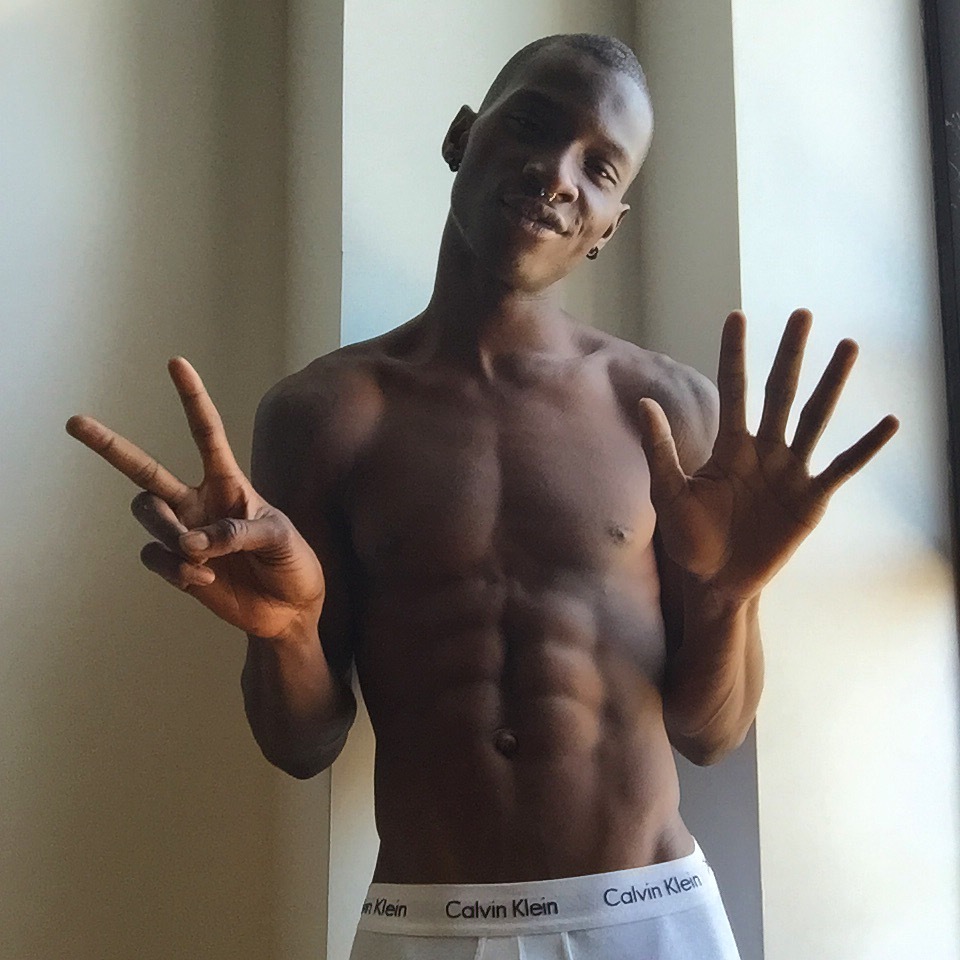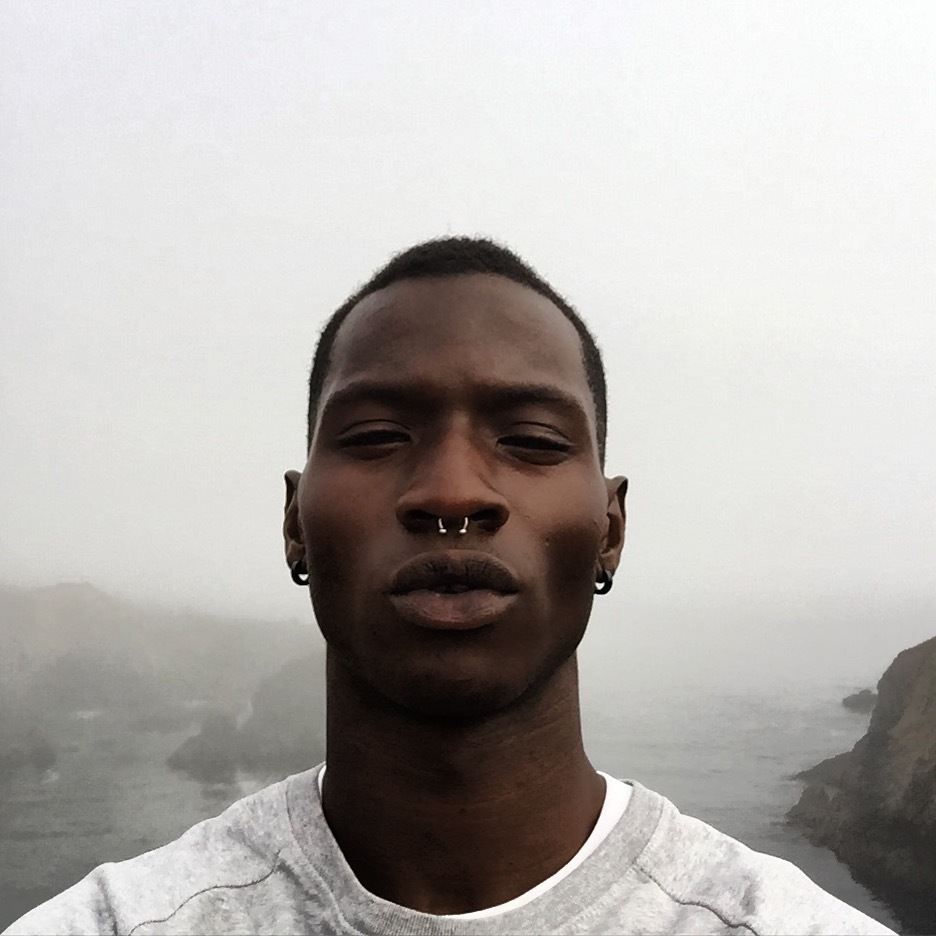25 year-old model Adonis Bosso rolls down Mott Street in Soho on his long board, wearing black jeans and a white tee shirt with black lettering that reads, “I met god she’s black.” It’s a perfect message for a model who uses his growing visibility on the runway to speak out about fashion’s diversity issue, and the #BlackLivesMatter movement. I wave and he stops his longboard in the street and flashes a smile. “I’m sorry for being late,” he says. “Should we have a chat about modeling?”
Bosso is fresh off the runways of New York Men’s Fashion Week, having walked for Perry Ellis, Tommy Hilfiger, John Elliott, and stood in a conceptual lineup for Public School’s fall/winter 16 line. Born in the Ivory Coast, he moved to Montreal at the age of three and started modeling when he showed up at his girlfriend’s agency to drop something off and was signed on the spot. “But in 2009, black models weren’t really working because of the financial crash,” he explains.

Times have changed somewhat for this models.com top fifty model. He is now a fixture of the Dolce & Gabbana family, appearing on the brand’s runways and in its ad campaigns for the last few seasons. “I said, ‘Domenico, thank you, you put three black boys in Dolce & Gabbana, because it’s never seen and it gives us validation,'” he explains, sitting in the café of the New Museum. How did Domenico Dolce respond? “He told me I was the most beautiful and most attractive and he used me again. The next season he put even more black guys on the runway.”
Bosso’s Instagram carries messages about diversity to his more than twenty-eight thousand followers. A caption to a shirtless selfie reads, “#blackout show off your melanin,” and when he posted images from his first Dolce & Gabbana ad campaign, he wrote, “look how far we’ve come,” calling out the progress of black models. “It’s important to have a voice. Modeling used to be just about the image,” he says. “We were only seen as a hanger, but now in this day and age with social media, models are not just models, we are public figures and brand ambassadors. We have a voice and we are educated,” he tells me.

His description of the hurdles for models of color squares with The Fashion Spot’s fall/winter 15 fashion diversity report. The study found that of the 9,538 models that appeared in the fashion presentations in New York, London, Milan, and Paris, 80% were white. The numbers for 2015 ad campaigns are consistent with presentation statistics – 84.7 percent of the models cast in the 577 fashion campaigns advertised were white.
“I went to a casting in Milan and I waited forever in line, and when I finally made it to the front of the line, a casting director told me, ‘Sorry, we aren’t looking for colored boys,'” Bosso says. His experience illustrates fashion’s diversity problem, raising questions about who feel welcomed to wear certain brands. If models are only representative of white people then how should people of color feel buying those brands?

“For a colored model, I think it’s important if you have that visibility to empower other people. With my job so many people come up to me [in real life or] online and say, ‘My friend looks like you,’ and I actually like that,'” Bosso says, playing with his septum ring. “It’s great, because apart from Tyson Beckford, when I grew up, we didn’t have [black] male figures of beauty.”
Bosso says the reason he started modeling was because it allows him to be creative. But he also makes the point that diversity in fashion isn’t just about including black faces in campaigns and runways presentations. “We are at a point where we can’t have tokens anymore,” he says. “We are getting more representation all around on the runway and in campaigns. Yet I feel like very often we are still being dressed in the ‘hood-ish’ fashion, like the more streetwear lines. Often you see a white man in a suit before you see a black dude.” He turns up his septum ring to make it disappear inside his nose, and says, “Tribal isn’t all we represent, we can represent class and luxury as well.”

And to the credit of the industry, Bosso has represented both. On his Instagram account, he uploaded a photo of himself on Dolce and Gabbana’s runway kitted out in fur and patterns befit for royalty. He has also consistently walked for streetwear brands like Hood By Air and Jeremy Scott. But he tells me, “Low-key, London is my favorite city to walk in because it’s very diverse. They will cast all black models and not think twice, and the people don’t give a fuck, they are so down to earth but they will slice you at the same time.”
Standing on the Bowery outside the New Museum, I ask him if he sees himself as part of a broader change in the industry. He puts on his shades and says: “Fashion is like a timeline of what’s happening now, and it has an opportunity to end this supremacy of whiteness,” before hopping on his skateboard and pushing away.
Credits
Text Antwaun Sargent
Photo courtesy Adonis Bosso
